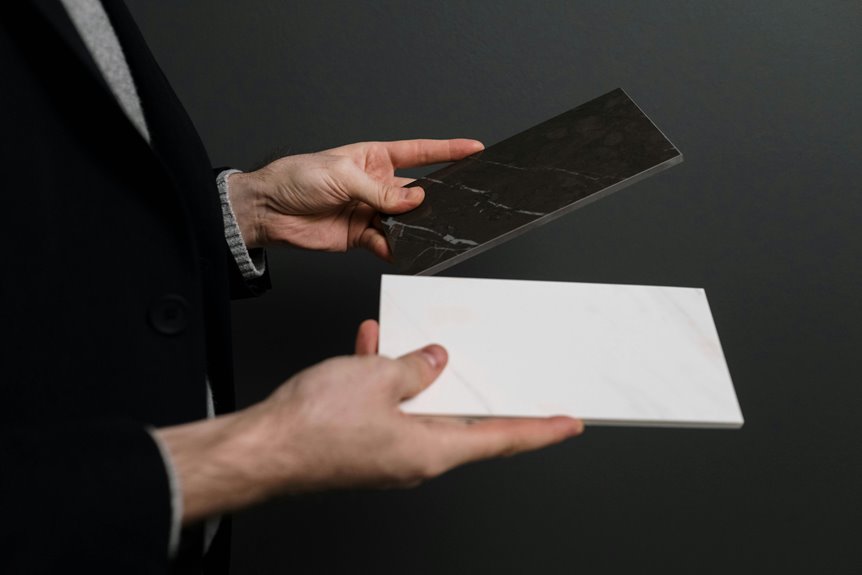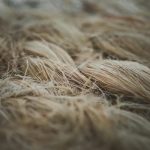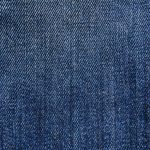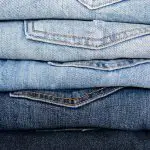If you’re choosing between lyocell and viscose, know both come from cellulose but differ a lot. Lyocell is softer, more durable, and made using a cleaner, eco-friendly process that recycles chemicals. Viscose feels silky but’s less durable and involves harsher chemicals. You’ll find lyocell better for sensitive skin and moisture-wicking, while viscose offers vibrant drape. Want to explore how these differences affect care, comfort, and sustainability? You’re on the right track.
Table of Contents
Key Takeaways
- Lyocell is produced via a closed-loop, eco-friendly process, while viscose uses harsher chemicals harmful to the environment and workers.
- Lyocell offers superior durability and moisture-wicking, whereas viscose is weaker when wet and prone to stretching.
- Both fabrics have a soft feel, but lyocell is silkier, more breathable, and better for sensitive skin.
- Viscose provides a vibrant drape and silky texture but lacks lyocell’s refined sheen and breathability.
- Lyocell can be machine washed with care, while viscose usually requires gentle hand washing and air drying.
What Are Lyocell and Viscose?
Lyocell and viscose are both types of rayon fibers made from cellulose, but they differ in production methods and environmental impact.
When you wear lyocell, you’re choosing a fabric known for its softness, breathability, and durability. It feels smooth against your skin and resists wrinkles well.
Viscose, on the other hand, offers a silky texture and vibrant drape, making it popular for stylish, flowing garments. You’ll find both fabrics absorb moisture effectively, keeping you comfortable.
However, lyocell tends to be more eco-friendly, using a closed-loop process that recycles chemicals. Viscose production can be harsher on the environment due to chemical use and waste.
Lyocell offers a greener choice with its recycled chemicals, unlike the more chemically intensive viscose production.
Understanding these differences helps you make smarter choices about the fabrics you pick for your wardrobe.
How Are Lyocell and Viscose Made?
Although both fibers come from cellulose, they’re made through quite different processes that affect their environmental footprint and fabric qualities. You’ll find lyocell is produced using a closed-loop system where wood pulp dissolves in a non-toxic solvent, then spun into fibers. Viscose, however, involves treating cellulose with chemicals like carbon disulfide, creating a viscous solution before fiber spinning.
| Lyocell | Viscose |
|---|---|
| Closed-loop, eco-friendly | Chemical-intensive |
| Uses non-toxic solvent | Uses hazardous chemicals |
| Smooth, strong fibers | Softer, less durable fibers |
| Modern, sustainable method | Traditional, older process |
Understanding these differences helps you appreciate why these fabrics feel and perform uniquely.
Environmental Impact of Lyocell vs. Viscose
You’ll notice that lyocell and viscose differ markedly in how they’re produced, which affects their environmental footprints.
Lyocell uses a closed-loop process that recycles solvents, while viscose often involves harsher chemicals and more waste.
Understanding their biodegradability and waste impacts will help you make a greener choice.
Production Process Differences
Because both fibers come from wood pulp, their environmental impact largely depends on how that pulp is processed.
When you look at lyocell, it uses a closed-loop system that recycles nearly all chemicals and water, minimizing pollution. This process dissolves wood pulp in a non-toxic solvent, making it more eco-friendly.
On the other hand, viscose production involves toxic chemicals like carbon disulfide, which can harm workers and the environment if not managed properly. The viscose process also releases waste into waterways more frequently.
So, if you want a fabric made through a cleaner, safer production method, lyocell is the better choice.
Understanding these differences helps you make informed decisions about the textiles you choose, balancing sustainability with performance.
Biodegradability and Waste
When you consider how lyocell and viscose break down after use, their biodegradability plays a key role in their environmental impact.
Lyocell fibers are fully biodegradable and compostable, meaning they break down naturally without releasing harmful chemicals. This makes lyocell a better choice if you want to reduce waste and support eco-friendly textiles.
Viscose, while also biodegradable, involves chemical treatments during production that can leave residues affecting its breakdown. Additionally, viscose waste often includes toxic byproducts that complicate disposal and recycling.
If you’re aiming to minimize environmental harm, lyocell’s cleaner production and easier biodegradability give it an advantage.
Comparing the Comfort and Feel of Lyocell and Viscose
How do lyocell and viscose compare in comfort and feel?
When you wear lyocell, you’ll notice its silky smooth texture and breathability, which keeps you comfortable even in warm weather. It feels soft against your skin, reducing irritation, making it ideal for sensitive skin.
Viscose also offers a soft, luxurious feel but tends to be less breathable than lyocell, which might make you feel warmer in humid conditions.
Both fabrics drape beautifully, but lyocell has a slight sheen that gives your clothing a refined look.
If you prioritize moisture-wicking and a cooler feel, lyocell edges out viscose. However, viscose still provides a pleasant softness and fluidity that you’ll appreciate in flowing garments.
Durability and Care Requirements of Both Fabrics
Durability plays a key role in choosing between lyocell and viscose, especially if you want your clothes to last.
Lyocell is generally stronger and more resistant to wear, making it a better choice if you need long-lasting fabric. Viscose, while soft, tends to weaken when wet and can be more prone to stretching or tearing.
When caring for these fabrics, keep these points in mind:
- Washing: Lyocell handles machine washing on gentle cycles better, while viscose often requires hand washing or dry cleaning to maintain its shape.
- Drying: Avoid high heat; air dry both fabrics to prevent damage.
- Ironing: Use a low heat setting for lyocell, and be extra cautious with viscose to avoid burns or shine.
Understanding these care differences helps you maintain your garments longer.
Common Uses and Applications in Fashion and Home Textiles
Both lyocell and viscose offer versatile options for your wardrobe and home, thanks to their soft textures and breathable qualities.
You’ll find lyocell commonly used in activewear, casual clothing, and eco-friendly fashion because it handles moisture well and feels cool against your skin.
Viscose, on the other hand, is popular for elegant dresses, blouses, and linings due to its silky sheen and drape.
In home textiles, lyocell often appears in bedding and towels since it absorbs moisture efficiently and resists wrinkles.
Viscose is frequently chosen for curtains, upholstery, and decorative pillows because it mimics the look of natural fibers with a luxurious touch.
Both fabrics let you enjoy comfort and style in different settings, depending on your needs and preferences.
Price Differences and Availability in the Market
When choosing between lyocell and viscose for your wardrobe or home, price and availability play a big role.
Lyocell tends to be pricier because of its eco-friendly production, while viscose is generally more affordable and widely found. You’ll find viscose in many stores, but lyocell might need a bit more searching.
Here’s what you should consider:
- Cost: Viscose is budget-friendly; lyocell commands a higher price due to sustainable processing.
- Availability: Viscose is more common in mainstream markets; lyocell often appears in specialty or eco-conscious brands.
- Accessibility: If you want easy access, viscose wins; for a greener choice, lyocell may require some effort to find.
Knowing these factors helps you make a smart choice that fits your budget and values.
Frequently Asked Questions
Can Lyocell and Viscose Be Blended With Other Fibers?
You might think blending fibers weakens fabric, but you’re wrong. You can blend lyocell and viscose with cotton, wool, or synthetics to enhance durability, texture, and breathability, creating versatile, comfortable fabrics for various uses.
Are Lyocell and Viscose Hypoallergenic?
You’ll find lyocell is generally hypoallergenic and gentle on sensitive skin, but viscose might cause irritation for some. If you have allergies, you’ll want to test viscose fabrics carefully before wearing them regularly.
Do Lyocell and Viscose Fabrics Shrink After Washing?
Did you know up to 20% of viscose can shrink after washing? You’ll find lyocell shrinks less, but both need gentle care. Always wash in cold water and air dry to keep them fitting perfectly.
How Do Lyocell and Viscose Fabrics React to Dyeing?
You’ll find that both fabrics absorb dye well, but lyocell takes it more evenly and resists fading better. Viscose can be trickier, sometimes showing uneven colors or bleeding after washing, so handle it carefully.
What Are the Best Storage Methods for Lyocell and Viscose Clothes?
You should store lyocell and viscose clothes in a cool, dry place, away from direct sunlight. Use breathable garment bags or cotton covers to prevent moisture buildup and avoid plastic, which can trap humidity and cause damage.
- What Is Italian Percale? Exploring a Mark of Luxury - July 14, 2025
- Is Percale Better Than Cotton? A Misleading Question Explained - July 14, 2025
- What Is Organic Cotton Percale? The Benefits for You and the Planet - July 14, 2025







